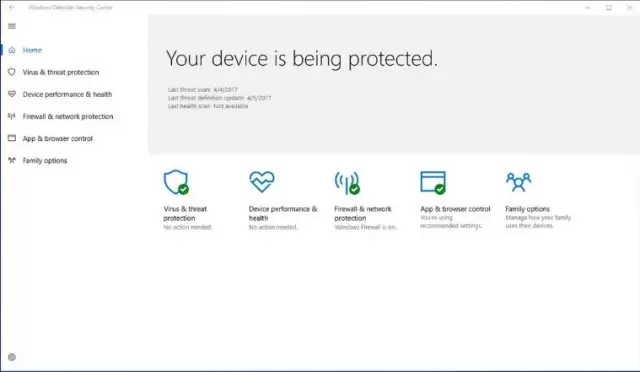Windows Defender or Avast: Which is better?
As the world becomes more dependent on computers and software programs, the need to protect systems from malware attacks and hacking has never been more urgent. Many users of Microsoft systems rely on Microsoft’s Windows Defender application for system and data protection while others will argue that third-party applications are better. Between Windows Defender vs. Avast, which should you go for?

Our Short Verdict
Based on detailed analysis, we have come to a logical conclusion that Avast is, in fact, a more superior antivirus program to Microsoft’s Windows Defender program and for a good reason. To squash the brewing debate amongst users concerning Windows Defender antivirus vs Avast, we provide valid reasons why Avast nicks it by a mile.
Check also our reviews:
Avast antivirus vs Windows Defender: Main Features
To properly analyze the capability of any computer program, one must analyze its features in order to understand better what the program offers.
Windows Defender
Windows Defender is Microsoft’s built-in antivirus program which comes with all Windows systems. The program is designed to protect users from a virus which may be gotten from external drives or when browsing the internet. With this application, users can run multiple scans for virus and system errors, including checks on folders and files saved in the hard drive.

It also has a very reliable firewall for monitoring your activities while you browse the internet and also serves as a protective bar against hackers and criminal networks. Another plus this program has is the parental protection feature which can be activated to prevent young children from interacting with certain blacklisted sites. With Windows Defender you can:
- Run official scans to search and eliminate malware;
- Reinstall latest Windows drives without any loss of data;
- Protection from dangerous websites using the Smart Screen Utility feature.
Windows Defender Limitations:
- Parental control feature can only be activated on Microsoft Edge browser but not on third-party browsers;
- Some of its features are not available on some multi-platform applications with advanced settings.
Avast Antivirus
For Avast antivirus program, it has all the features found in Windows Defender and a little extra. What do we mean? When comparing Avast Antivirus and Windows Defender, we found out that Avast has several added features which boost it’s security capabilities unlike what is obtainable in many other free third-party programs including Windows Defender. What users stand to enjoy when using Avast’s free package is what other antivirus programs offer at a premium rate.

With Avast, you can run three types of scans, namely a smart scan, a full scan or a boot scan for virus detection. Furthermore, Avast allows you to combine its use with that of any other antivirus program in passive mode. The program also has two unique features, namely the Wi-Fi inspector (for identifying exposed network settings) and the Software updater (to identify outdated applications and drivers on your device). With Avast you can:
- Eliminate malware and all forms of virus inhibiting system performance
- Provides users with email client protection
- Allows browser extensions unlike Windows Defender which does not
- Avast Safe price feature helps you get the best deal when shopping online by doing quick price comparison for products
- Avast Online Security warns you about harmful sites and blocks them before they do your PC any harm.
Verdict: Windows Defender is a durable application but falls short of Avast due to the extra advantages that the latter provides users.
Windows Defender vs Avast Antivirus: Protection capabilities
Both use high tech innovations to scan for malware by monitoring online activities and the attributes of all files and folders. When analyzing both programs in terms of protection capabilities, it is best to rely on data released by reputable security institutes known for testing and rating Antivirus programs. AV-Test is one institute that comes to mind. In a recent publication released by the test organization, the following was ascertained after years of testing both programs:
- Windows Defender protected a Windows 10 platform at a rate of 100% from malware when pitched against 202 samples in September 2018. By October, it’s protection capability against the same number of samples dropped to 96.3%. Against prevalent malware, it detected 99.5% malware in 9,797 samples and a resounding 99.9% the following month.
- Avast, on the other hand, posted a 100% result with the same number of samples using similar parameters during the same period.
AV-Test Score: Windows Defender (5/6), Avast Antivirus (6/6)
In a similar test conducted in July and August the previous year, they were both tested using 10,973 extensive malware samples over a period of 198 zero-day and Avast showed it’s superiority again by posting 100% and scoring a 6/6 rating while Windows Defender posted 99% and a 5/6 rating against the same number of samples.
AV-TEST Verdict: Avast edges it again and proves to be the superior program.
Windows Defender Antivirus vs Avast: System Resources
Effective antivirus programs run in the background continuously so as to keep your device protected at all times. Having an excellent system resource feature is the only way an antivirus program can do this successfully without placing too much of a strain on the device. Going back to AV-Test system performance results, the institute looked at the degree at which both programs slowed down system performance when active in the background.
In tests conducted by the experts between July and October 2017 on Windows 10, these were the results.
July – August
Windows Defender – 4.5/6 stars.
Avast – 5/6 stars.
Another institute, AV Comparative ran their own corresponding tests on both programs to determine which had the best system resources. They performed their test analysis by executing similar everyday tasks in both programs such as downloading files, browsing the internet, installing and uninstalling apps, etc.
Windows Defender scored a Standard rating of 30.4 while Avast was awarded an Advanced rating of 8.9
Verdict: Based on test results, it proved that Avast has an advanced system resource compared to Windows Defender because it places less strain on system performance when active and running in the background.
Avast Antivirus or Windows Defender: Better interface
When it comes to the user interface, developers take their time to design interfaces with user-friendly features and simple navigation systems. Although Windows Defender used to be a little archaic in the past, it has been greatly improved in light of recent updates. On the user page, you can now navigate from one feature or setting to the other with ease.
As for Avast, the developer has not rested on its oars as they have continued to update the program to incorporate advanced security features for user satisfaction and device protection.
Verdict: Windows Defender developers continue to improve its interface, but the features of Avast has remained far more superior and preferable because it is much easier to use.
Our Verdict: Avast vs Windows Defender
Based on system testing by experts using multiple parameters and the personal use of both programs, Avast antivirus program offers users much more than Windows Defender does. In all fairness, when comparing Windows Defender vs. Avast, the former has several functional features, but the latter boasts of a far more efficient malware detection capacity and a more advanced interface. To crown it all up, Avast has less of an impact on PC’s when active. This makes it the more ideal program of the two.
Windows Defender highlights:
- Provides robust protection from most types of malware
- Has a built-in firewall
- Phishing protection for IE and Edge browsers
- Parental control feature is available.
- Comes pre-installed in Windows OS; protection is enabled by default.
Avast highlights:
- Compatible with all modern platforms.
- Different levels of protection against malware.
- Effectively detects phishing sites.
- A strong security plug-in for browsers which automatically detects suspicious websites.
- New passive mode for running multiple security products in parallel.
